What's New
Displaying results 3141 - 3150 of 4052
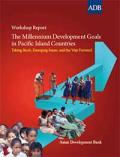
Resource | Publications,
This report provides a regional perspective on the progress made by Pacific island countries (PICs) in achieving the Millennium Development Goals (MDGs). It also discusses the implications of climate change, rising food and fuel prices, the 2008 financial crisis, and emerging trade agreements.
Most PICs face considerable challenges in achieving the MDGs, largely because of stagnant economic growth, a lack of employment opportunities in the formal sector, and the subsistence nature of the informal sector. The Cook Islands, Niue, Palau, Samoa, and Tonga are “on track” toward achieving the MDGs. Fiji, the Marshall Islands, the Federated States of Micronesia (FSM), Solomon Islands, Tuvalu, and Vanuatu are exhibiting “mixed progress” in realizing the goals by 2015. Conversely, Kiribati, Nauru, and Papua New Guinea are “off track” in achieving the MDGs.
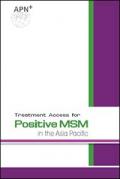
Resource | Publications,
In collaboration with various community-based organisations, APN+ conducted a peer-led mixed method research project in six Asian countries to document the range of services available for MSM and transgender people living with HIV and to identify barriers to access and use of these services.
The following report consists of six separate country reports: India, Indonesia, Malaysia, Myanmar, Nepal, and Singapore. Each report has a standard format and can be read independently. A summary of key findings has been included at the end of this section. Summary findings are also provided for each country report for easy reference.
Quantitative survey data forms the background of each country report, both to provide an overview of population demographics and to establish the structural barriers that shape treatment access among communities of MSM in these populations. The statistics give a sense of the size of the problem faced by local communities.

Resource | Publications,
This report describes specific examples of programme activities that seek to address HIV and promote health and rights among MSM and transgender people in six Asian cities: Bangkok, Thailand; Chengdu, China; Ho Chi Minh City, Viet Nam; Jakarta, Indonesia; Manila, the Philippines; and Yangon, Myanmar.
These examples, identified through consultation with local HIV leaders and practitioners in those six cities, are presented here to inform planning, design, and delivery of health and community services at the municipal level.
Ultimately, these types of activities, if widely adopted and scaled up in combination, would lead to a reduction in rates of HIV infection, improve access to health services, and reduce human rights violations in urban areas and cities in the Asia-Pacific region.
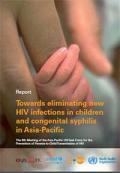
Resource | Publications,
The HIV epidemic in Asia-Pacific is growing rapidly, although most countries have low HIV prevalence while some have concentrated epidemics. AIDS is increasingly feminized through intimate partners’ transmission with gradual increase of new HIV infections among low-risk women and consequent mother-to-child transmission. In 2008, an estimated 1.4 million women and 161,000 children aged 14 years and under were infected with HIV in the region. The estimated number of HIV-positive pregnant women was 85,000. New infections in children totalled 19,700, while 11,700 children died of causes related to AIDS.
Several regional initiatives have been made to address these issues, including a recent focus on eliminating new HIV infections in children and congenital syphilis. On 25 November 2010, UNICEF, WHO, UNAIDS and UNFPA, with support from over 150 delegates from 20 countries across Asia-Pacific, adopted the historic goal of eliminating all new paediatric HIV and CS infections in the region by 2015. The declaration of elimination as an aim by the Asia-Pacific UN PPTCT Task Force represents a paradigm shift in the response to HIV & AIDS and CS. Previously, agencies and health care providers had been working to prevent as many new infections as possible, with growing success but still with enormous gaps to be filled.
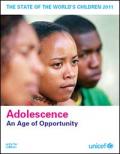
Resource | Publications,
Today, 1.2 billion adolescents stand at the challenging crossroads between childhood and the adult world. Nine out of ten of these young people live in the developing world and face especially profound challenges, from obtaining an education to simply staying alive – challenges that are even more magnified for girls and young women.
In the global effort to save children’s lives, we hear too little about adolescence. Given the magnitude of the threats to children under the age of five, it makes sense to focus investment there – and that attention has produced stunning success. In the last 20 years, the number of children under five dying every day from preventable causes has been cut by one third, from 34,000 in 1990 to around 22,000 in 2009.
This report catalogues, in heart-wrenching detail, the array of dangers adolescents face: the injuries that kill 400,000 of them each year; early pregnancy and childbirth, a primary cause of death for teenage girls; the pressures that keep 70 million adolescents out of school; exploitation, violent conflict and the worst kind of abuse at the hands of adults.
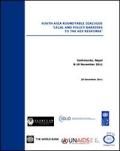
Resource | Publications,
The South Asian Roundtable was a joint initiative of SAARCLAW, the International Development Law Organization (IDLO), the World Bank, United Nations Development Program (UNDP) and the Joint United Nations Programme on HIV/AIDS (UNAIDS); under an overarching goal to promote a legal enabling environment and strengthen the legal response to HIV in South Asia.
The Roundtable was designed to build an informed and engaged group of legal professionals and advocates committed to leading the legal response to HIV in their home countries. In pursuance of this aim, the Roundtable created a forum for the examination and evaluation of legal and policy barriers to the HIV response in South Asia.
During the course of the Roundtable, the following law and policy issues were identified as key barriers to the HIV response: the criminalization of behaviors of key populations at higher risk of HIV exposure; law enforcement policy and practices; lack of sensitivity, knowledge and awareness by law and justice sector leaders and stakeholders; the gap between black letter law and practice; and the clear need for greater coordination and collaboration within the law and justice sector.
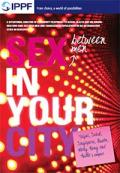
Resource | Publications,
In response to the rapid increase in HIV infections among men who have sex with men (MSM) and transgender people in developed Asia, the International Planned Parenthood Federation (IPPF) launched its ‘Metropolitan Man Initiative’ in 2010 to support civil society organizations in the region to respond to issues related to men's sexual health, including HIV.
This report summarizes key findings from community organizations that provide HIV and sexual health services to the MSM and transgender populations in six metropolitan areas in developed Asia: Kuala Lumpur, Singapore, Hong Kong, Taipei, Seoul and Busan.
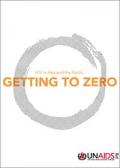
Resource | Publications,
This report, HIV in Asia and the Pacific: Getting to Zero, comes at a decisive point in the international and regional response to the HIV epidemic.
In June 2011, 192 Member States of the United Nations agreed to bold new targets and commitments that can make AIDS a thing of the past, including:
• reducing sexual transmission of HIV by 50%;
• halving HIV infection among people who inject drugs;
• eliminating new HIV infections among children;
• increasing in the number of people on lifesaving treatment to 15 million; and
• closing the US$ 6 billion global AIDS resource gap.
World leaders pledged to achieve these goals by 2015, which will move us closer towards the vision of Zero new HIV infections, Zero discrimination and Zero AIDS-related deaths.
'Getting to Zero' in Asia and the Pacific demands evidence-based responses that solidly focus on and involve key populations most at risk, are adequately resourced and grounded in human rights. Increasingly, countries are acting on this knowledge – and reaping the rewards. Tremendous progress has already been made, proving that the epidemic can be reversed, and that HIV treatment and care can be brought to those who need it.
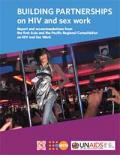
Resource | Publications,
To increase the momentum and effectiveness of the HIV response in Asia and the Pacific, UNFPA,
UNAIDS and the Asia Pacific Network of Sex Workers (APNSW) joined hands to organize, in collaboration with governments, UNAIDS cosponsors, national and local sex worker organizations, and civil society organizations, the first Asia and the Pacific Regional Consultation on HIV and Sex Work in October 2010 in Pattaya, Thailand.
This Regional Consultation, which was the result of an extensive and participatory process spanning over a year, brought together some 140 participants from eight countries in the region as well as selected national, regional and global resource persons that have experience or influence in the area of HIV and sex work. These resource persons included representatives from regional community networks, sex worker organizations, NGOs, researchers, government organizations, and United Nations (UN) agencies. Country teams comprising representatives from national AIDS authorities, Ministries of Health, Ministries of Justice or police, sex worker communities and the UN system participated from Cambodia, China, Fiji, Indonesia, Myanmar, Pakistan, Papua New Guinea, and Thailand.
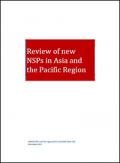
Resource | Reviews and Snapshots,
A review of 10 of the new National Strategic Plans (NSPs) that had either been approved or were in final draft stage was conducted by UNAIDS RST and the regional HIV and AIDS Data Hub between August – December 2011 in order to assess whether: a) they contained various essential elements that have been defined to constitute an effective response for the countries in the region4, b) to look for improvement in the regional strategic planning in terms of process and components of an effective response, and c) to establish the information necessary for working with countries to review whether NSPs are sufficiently aligned towards the new United Nations High Level Meeting targets that all countries have endorsed.





